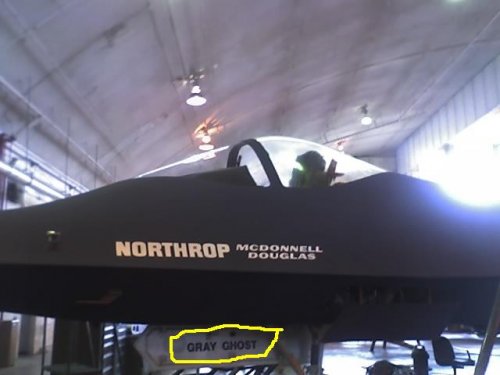Dear donnage99,
You need to have a lot more information that you obviously have your hands on to pretend you can question a very tough design decision made by Northrop. Don't argue it with me, argue it with the people who build this plane.
And you need to find some more quotes by Paul Metz re the YF-23 not the F-22 if you want to know something more about the true YF-23 perfomance
First of all, I never said that I suggested the yf-23 to have thrust vectoring for subsonic maneuverability. I suggested it for stealth performance.
If you would like to suggest that the overall stealth profile of the YF-23 would have been better by adopting F-22 like 2D TV nozzles then I will be sure to save my time and skip reading your following posts
Thrust vector of f-22, ....is good for overall rcs stealth performance since you don't have to use as much control surfaces, which would mess up its ideal stealthy shape.
You obviously are not fully aware of how the F-22 actually uses its TVC. It is not used to perform any one maneuver by itself or extend the maneuverability envelope of the aircraft. The sole purpose of the TVC on the F-22 is to get it from one maneuver into the other faster.
То imply that moving flight control surfaces on an aircraft like the YF-23 degrades its stealth and that can be eliminated by transferring control to the 2D TVC is plain funny my friend. You need to think about it some more.
But the f-22 design pushed its stealth boundary to be close enough to yf-23 so that it wouldn't be significant in the final decision from the Air Force
I think you have your facts very wrong. Actually I do not think you have the facts. But there are some people who do and very clearly imply what a difference that was. Watch the documentary YF-23 Web of Secrecy.
This is one of the reason why Lockheed kept thrust vectoring for the a/f-x proposal (quoted from flight global)
I bet it had to do more with adequate control power for an Navy aircraft than any consideration of decrease of stealth due to moving flight control surfaces.
As for yf-23 maneuver better in supersonic speed then yf-22, who said that? You? Let's stick with reliable sources, shall we? According to Paul Metz, test pilot of yf-23, and later f-22, he said that thrust vectoring, unlike popular belief, actually benefits supersonic maneuverability.
That does not mean that F-22 has better supersonic maneuverability. It only means that F-22 has TCV and they help in supersonic maneuverability.
In fact on of the benefits of using TCV is that you can have your horizontal stabilizers smaller and reduce weight. Lockheed designers took advantage of that. In other words you can compensate the lack of TCV with a larger area flight control surfaces. That is what Northrop did.
That is a fact.
The superior supersonic performance of the YF-23 comes from the larger wing area, better area ruled design, and better engine integration. The YF-23 was a lot faster for a given throttle settings and so could pull more Gs while keeping the same speed. Again, you should check some comments of Paul Metz from the flight testing of the 1990 about the YF-23 performance.
Also from AviationWeek magazine, thrust vectoring offers significant maneuverability at high attitude, since there isn't much air up there for control surfaces to work efficiently with.
YOu should really think a little before posting something like that.
How would an airplane fly in the first place if the thin air was making control surfaces inefficient? Actually flying at Mach 1.5+ at high altitude is not a problem for the wings or the flight control surfaces. It is a problem for the engines. The engines simply do not have the needed inlet air-pressure to produce enough trust, hence the use of so much afterburners on similar aircraft such as SR-71.
You also seem to forget the reliability index. If TCV was so reliable, we would have had tailless aircraft decades ago. Aircraft relying on 3D TVC for all control.
If you have not read trough every book on the ATF subject, you should as I have if you consider yourself a fan and then ask questions that were not answered there.
Re the TVC as a selection criteria. Yes it did matter to some people but it was more a political factor than true capability. I don't know where you live but in the 90s a lot a people thought that a cobra like maneuvers were more useful in combat than stealth. The F-22 could counter such capabilities on paper with TVC. The F-23 couldn't. Its true strength lied in numbers that are to this day classified.
You should be seeking those, not to question the YF-23 design.
One of the biggest reasons F-22 won is that Lockheed produces several times the amount of paperwork needed to convince the brass it had a better management plan. It did and it probably had. It was not a performance stand of. It it was, the YF-23 would have won hands down.


